 |
Food Allergy Basics in Early Childhood (CDA 1 and 5) |
3.00 |
Welcome to Food Allergy Basics in Early Childhood. This course is focused on ways to prevent accidental exposure to foods that can cause an allergic reaction. You will be able to describe ways to prevent accidental exposure to foods that cause an allergic reaction. You will also be able to demonstrate how to read a food label to reduce the risk of accidental exposure to foods that can cause an allergic reaction. In addition, you will learn how to use a Food Allergy and Anaphylaxis Emergency Care Plan to care for a child with a food allergy and identify the symptoms and triggers of food allergies. This course is also designed to be part of a Child Development Associate (CDA) Credential™ curriculum. It covers Subject Area 1: Planning a Safe, Healthy Environment to Invite Learning and Subject Area 5: Managing an Effective Program Operation. |
 |
STEM in Early Childhood (CDA 2, 3, and 8) |
3.00 |
STEM is an intentional, integrative approach to teaching and learning that can occur across all knowledge areas; it is not a specific curriculum. The STEM approach focuses on providing opportunities for students to explore and develop a comprehensive set of concepts, competencies, and thinking skills. STEM competencies include a vocabulary rich in the language of science, technology, engineering and math—words like hypothesis, gravity, buoyant, balance, temperature, and battery. STEM competencies also include basic principles of engineering, like problem-solving and planning; of science, like experimentation and observation; of technology, like using tools to complete both a task and solve real world problems; and of math by recognizing that basic principles of math are part of everyday activities, like comparing and contrasting, counting, and dividing a whole to create equal parts.
This course is also designed to be part of a Child Development Associate (CDA) Credential™ curriculum. It covers Subject Area 2: Advancing Children’s Physical and Intellectual Development, Subject Area 3: Supporting Children’s Social and Emotional Development and Subject Area 8: Understanding Principles of Child Development and Learning. |
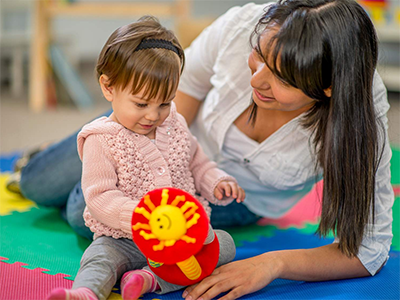 |
Infectious Diseases in Early Childhood (CDA 1) |
3.00 |
An infectious disease is an illness that is caused by organisms such as bacteria, viruses, fungi, and parasites. Many of these organisms live in or on our bodies, and are normally harmless. But under certain circumstances, they can cause disease. This course is also designed to be part of a Child Development Associate (CDA) Credential™ curriculum. It covers Subject Area 1: Planning a Safe, Healthy Environment to Invite Learning. |
 |
Safe Infant Sleep in Early Childhood (CDA 1 and 4) |
2.00 |
This course is focused on the American Academy of Pediatrics’ best practice recommendations for reducing the risk of Sudden Infant Death Syndrome (SIDS) and Sudden Unexpected Infant Death (SUID) and for promoting safe sleep in infant care settings as well as safe infant sleep policies, and how to communicate best practice for safe sleep with the families of infants in your care. This course is also designed to be part of a Child Development Associate (CDA) Credential™ curriculum. It covers Subject Area 1: Planning a Safe, Healthy Environment to Invite Learning and Subject Area 4: Building Productive Relationships with Families. |
 |
Habilidades del siglo XXI en la primera infancia (CDA 2, 3 y 8) (Spanish) 21st Century Skills in Early Childhood (CDA 2, 3, and 8) |
2.00 |
En este curso, identificará las habilidades que se consideran esenciales para el éxito en el siglo XXI y examinará la conexión fundamental entre estas habilidades y el aprendizaje académico. También explorará áreas clave de aprendizaje de los estándares de aprendizaje para la primera infancia (desarrollo social y emocional y enfoques para el aprendizaje a través del juego) que pueden ayudarlo a promover el desarrollo de habilidades del siglo XXI en los niños con quienes trabaja. |
 |
How to Nurture Wholistic Wellbeing |
1.00 |
Educators are nurtures, which means they make tremendous sacrifices to empower their students to grow and develop. That is a significant part of why education is commonly considered the noblest profession. Self-sacrifice, though, can become a liability when not considered in proper context; just as a cell phone battery must be recharged regularly so as not to lose all capacity, so too must the life of the educator be recharged so as not to lose the passion for this noble calling. The good news is that not only is personal balance attainable, but as we nurture it, we will find yourself maximizing our impact—both instructionally and relationally—in the classroom and beyond. Based on material from the book The Power of a Teacher, this workshop guides participants through the five areas of wellbeing: physical, occupational, emotional, financial, and spiritual. Not only does the workshop empower educators with a mandate for self-care, it offers practical, actionable strategies to achieve and maintain wellbeing. One of the most loving things we can do for those depending on us is to offer them the best version of ourselves Let’s get our recharge on! |
 |
Workplace Basics |
1.00 |
Starting a new job is intimidating enough, even more so when you are confused about how the basic workplace functions. This course will take you through the most essential things to know. This way, you can become the most successful worker possible. |
 |
Instructional Supports and Strategies for Teachers |
2.00 |
Welcome to Instructional Supports and Strategies for Teachers. This course covers the knowledge and skills all teachers need to safely and effectively support students with disabilities. |
 |
Evaluación e implementación de un entorno de cuidado infantil seguro (CDA 1 & 5) (Spanish) Assessing and Implementing a Safe Child Care Environment (CDA 1 & 5) |
2.00 |
Cuando las familias inscriben a su hijo en un programa de cuidado infantil, confían en que los profesionales que trabajan con su hijo lo mantendrán seguro. A medida que los bebés y niños pequeños curiosos se desarrollan, su deseo de explorar presenta desafíos de seguridad únicos. Este curso guía a los profesionales que trabajan con bebés y niños pequeños para evaluar los espacios de juego, las experiencias de los niños y las prácticas actuales para maximizar la seguridad de los niños.
When families enroll their child in a child care program, they trust that the professionals working with their child will keep him safe. As curious infants and toddlers develop, their desire to explore presents unique safety challenges. This course guides professionals who work with infants and toddlers to assess play spaces, children’s experiences, and current practices to maximize children’s safety. |
 |
Collaborative Protocol Update - Patella Dislocation |
0.40 |
This course is designed to be taken by all BLS and ALS providers in the MLREMS region as an addition module for the collaborative protocol update.
A score of 70% is required to pass the exam which follows. |
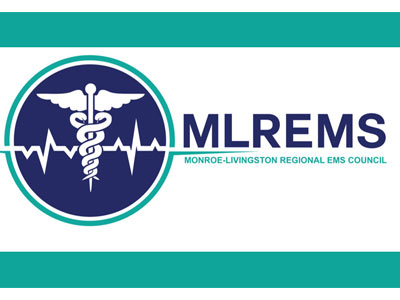 |
EMS Patient Handoffs in the Hospital |
0.50 |
|
 |
Commotio Cordis |
1.00 |
Paramedic Instructor Peter Bonadonna discusses his thoughts on Commotio Cordis in an effort to orient EMTs that are not familiar with the phenomena. |
 |
The Neuropsychology of Trauma and How It Impacts Learning |
1.00 |
Understanding the root of trauma and how we can cultivate a well- functioning classroom is an essential task for educators. How do VUCA (volatility/uncertainty/complexity/ambiguity) impact child and adolescent development? How do ACEs (adverse childhood experiences) impact child and adolescent development? How do SCARF needs (status/certainty/autonomy/relatedness/fairness) impact child and adolescent development? This workshop gives participants insight into the workings of the sympathetic (fight or flight) and parasympathetic nervous system (rest and digest) and their impact on learning. |
 |
Writing Skills |
0.50 |
In this course, you will learn how to develop your writing abilities by pursuing inspiration, practicing writing business letters and emails, differentiating between active and passive voice, and more. |
 |
Lifting and Moving—Lesson 1 |
0.50 |
There are several disciplines of healthcare that require proficiency in lifting and moving. Prehosital medicine and fire-service-related rescue requires a proficiency in this area that is beyond any other area of healthcare. Our team of experts discuss the challenges that we face in our community. In this first session of the series, we explore the mindset and preparation that must take place in order to achieve success.
Final Exam:This multiple choice exam is designed to test your knowledge of the material you just reviewed. You have two attempts to gain a 70% or higher on this exam. Please take your time and answer each question carefully. |
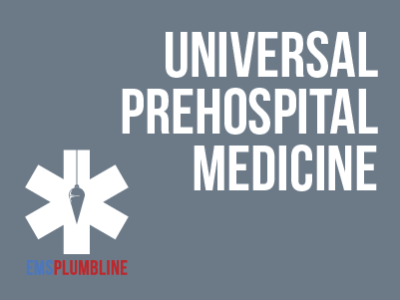 |
Mental Health - Anxiety Overview |
1.00 |
This brief overview of the topic of anxiety disorders explores the assessment and treatment that EMS providers should be familiar with. Along with the intricate evaluations that EMS providers must obtain on the patients they are caring for there is the underlying issue of evaluating ourselves. This tour of the topic will certainly offer opportunities for EMS providers to assist responders and patients alike.
Exam Description Please read each question carefully. You will have two attempts to gain a 70% or higher on this exam. If you are not successful in two attempts you are welcome to take the course again to gain the certification. Best of luck! |
 |
Climate vs. the Respiratory System |
1.00 |
This lesson briefly explores chronic respiratory illness. The benefit is we bring Meteorologist Bob Metcalfe to our discussion. You will quickly see that there are a number of things going on everyday that effect your respiratory patients that we should be aware of. Final Exam:Please read the questions carefully. You will have two attempts to obtain a 70% or higher. If you are not successful on your second attempt you are welcome to take the course again. Good luck! |
 |
Children with Special Health Care Needs: Assessments Part I |
1.00 |
This is the first lesson in a series that offers two opportunities. You have the opportunity to learn from a medical professional and the opportunity to learn from an experienced and caring mother. Listen carefully in this first lesson and consider what should be done for all medically fragile children. Final Exam: This multiple-choice exam is designed to test your knowledge of the material you just reviewed. You have two attempts to gain an 70% or higher on this exam. Please take your time and answer each question carefully. |
 |
Children with Special Health Care Needs: Assessments Part II |
1.00 |
In this second lesson of the series, another family offers their time and personal experiences. Take advantage of the information that the medical professionals and the mother of a medically fragile child offer. We believe that your assessment and treatment abilities will improve. Final Exam: This multiple choice exam is designed to test your knowledge of the material you just reviewed. You have two attempts to gain an 70% or higher on this exam. Please take your time and answer each question carefully. |
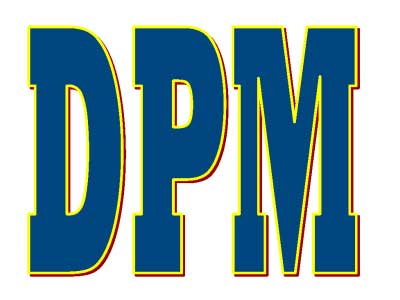 |
Effective Prehospital Patient Handoffs Between Providers |
0.50 |
Effective Prehospital Patient Handoffs Between Providers was designed to provide a common process for reporting patient information during the prehospital care process. Communication of the patient's prehospital care from all level of providers is essential in ensuring the continuation of care in a unified and effective manner and to help provide a seamless transition in their care. This course expands on the idea of effective patient handoffs to the field providers that often transfer patients between various levels of care from first-responder through advanced paramedics. Very often, initial observations of those initial responders are unavailable to subsequent responders - either because the patient has been moved, or the scene itself has been altered. Without an effective process to communicate these details, important information can and will be lost. |
 |
Fundamentals of Tutoring |
1.50 |
This course is designed for educators at all levels who are new to tutoring or wish to enhance their tutoring skills. It is also suitable for educators seeking to deepen their understanding of individualized instruction and build stronger relationships with their students outside the traditional classroom setting. It is just one out of many courses we offer. |
 |
Contentious Relationships |
1.50 |
This course will provide the foundation for maintaining healthy romantic relationships. It will also allow you to reflect on past and current relationships and identify why they failed. Finally, it will give you the skills to recognize red flags in potential love interests and within yourself. This course will teach you to minimize the effects of contentious relationships on your life, as well as on the lives of your children. |
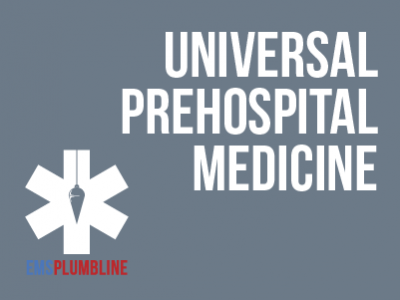 |
COVID-19 Pandemic—EMS Documentation |
1.00 |
Paramedics Mark Philippy and Ben Sensenbach take time in the Spring of 2020 to discuss the documentation concerns that are associated with COVID-19. This in-depth discussion will lead most providers to the conclusion that they are already doing good work and it should continue. This discussion is strong enough to lead the same providers to think slightly differently about what is done during a pandemic period and they may decide to make minor alterations in what the way the document after EMS responses. Final Exam: This multiple-choice exam is designed to test your knowledge of the material you just reviewed. You have three attempts to gain an 80% or higher on this exam. Please take your time and answer each question carefully. |
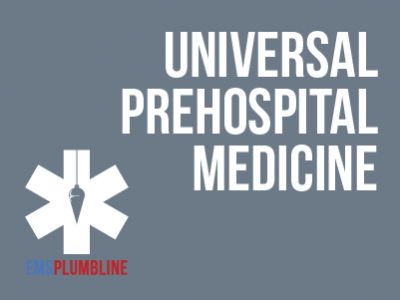 |
Head Trauma Interviews: Lesson 1 |
1.50 |
Lauren Wittman RN, BSN, CCRN-CMC, sits down to discuss some of the fundamental components of brain and skull Anatomy and Physiology with Jonathan J. Stone, M.D. . As the discussion continues, Dr. Stone offers an in-depth look at what we can expect when secondary trauma to the brain continues to manifest. This valuable information will assist you with understanding your local protocols no matter where you are. Final Exam: This multiple-choice exam is designed to test your knowledge of the material you just reviewed. You have two attempts to gain an 75% or higher on this exam. Please take your time and answer each question carefully. |
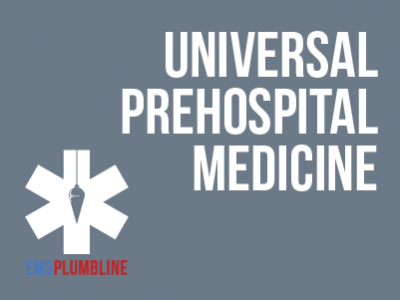 |
Popular Tourniquets |
1.00 |
Prehospital trauma care has not seen many changes that rival the advent of tourniquets. There is a lot of material that is nice to know. This lesson is a brief review of what we believe medics need to know. Successful completion of this lesson will set the stage for higher-level conversations. More importantly, we hope that you will be encouraged to practice applying the tourniquets until you have obtained true proficiency. Final Exam: This multiple-choice exam is designed to test your knowledge of the material you just reviewed. You have two attempts to gain an 80% or higher on this exam. Please take your time and answer each question carefully.
|


























